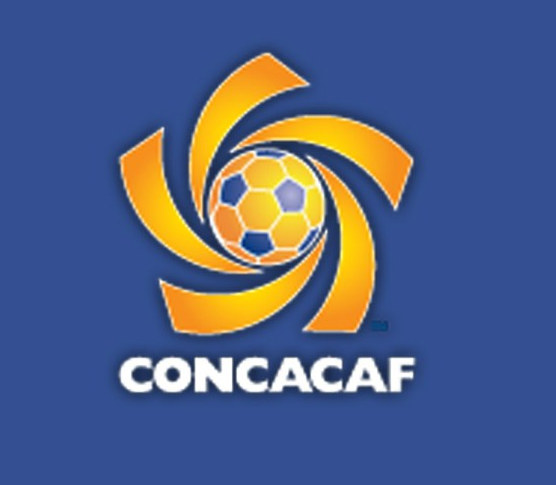ASUNCIÓN, Paraguay, 22 de marzo de 2018.- La semana pasada, CONCACAF anunció cambios importantes en el mundo de las competiciones, no solo al anunciar la nueva Liga de las Naciones, sino también al presentar el formato de su etapa de clasificación, a partir de septiembre de 2018.
La nueva competencia fue creada para asegurar que todos los 41 miembros de CONCACAF tengan la oportunidad de jugar más y competir más bajo los principios de ONE CONCACAF.
La fase principal de la competencia comenzará en 2019, después de la Copa de Oro, y consistirá en tres ligas o divisiones (A, B y C). Para decidir qué equipos competirán en cada división, se jugará un torneo de clasificación desde septiembre de 2018 hasta marzo de 2019 en las 4 ventanas internacionales. El torneo de Clasificación de la Liga de las Naciones también servirá como la clasificación para la Copa de Oro 2019, que se ampliará a 16 equipos.
El formato elegido para el torneo de clasificación es tan innovador como el torneo en sí. Habrá 34 equipos compitiendo, con los 6 equipos hexagonales clasificando automáticamente a la Liga de Naciones A y la Copa de Oro, mientras que el equipo nacional de Guatemala no participará debido a la sanción impuesta por la FIFA. Luego de un análisis comparativo de una compañía independiente, CONCACAF decidió separarse de los formatos tradicionales de Grupos y / o eliminación directa, y por primera vez un torneo oficial de fútbol internacional se llevará a cabo por el Sistema de Pots System © de MatchVision (Formato de Zonas ©), diseñado por el chileno Leandro Shara. Bajo este formato, los equipos se dividen no en grupos sino en Zonas, según su clasificación (o cualquier otro método), y cada equipo se ve obligado a jugar contra un rival de cada Zona, incluida la zona en que ese equipo haya sido designado. Todos los equipos se colocan bajo una tabla de posiciones única, que decidirá su destino en las siguientes rondas.
Este formato, único en su estilo, se presentó por primera vez en 2013, cuando Leandro Shara convocó a expandir la Copa Mundial de la FIFA, de 32 a 36 equipos, bajo un sistema de 3 Zonas, desafiando la declaración de Sepp Blatter de que la Copa Mundial de 32 equipos es la «mejor forma matemática». La alternativa de Leandro Shara habría aumentado el número de partidos por solo 6, sin necesidad de días o estadios adicionales, creando un torneo más competitivo, con equipos compitiendo en igualdad de condiciones. Al final, la decisión tomada por la FIFA bajo el liderazgo de Gianni Infantino fue aumentar el número de participantes a 48, en un formato criticado de 16 grupos de 3 equipos.
-¿Cuáles serán los beneficios de este nuevo formato adoptado por CONCACAF?
Primero, todos los equipos juegan igual cantidad de partidos bajo este sistema. Con grupos o eliminación directa, es matemáticamente imposible crear una competencia para 34 equipos con todos los equipos jugando el mismo número de partidos, y ningún equipo descansando en un día de partido. La flexibilidad del sistema creado por Leandro Shara no solo lo permite, sino que también encaja perfectamente en el intervalo de tiempo dado, creando una competencia con 4 días de partidos, otro logro imposible usando el formato de grupos (con grupos de 3 ó 4 equipos hay 3 partidos, y con grupos de 5 ó 6 equipos hay 5 fechas). Esto facilitará la logística, ya que los equipos tendrán exactamente un partido en cada ventana internacional, con 2 partidos en casa y 2 partidos fuera de casa en total.
Además, los equipos compiten en igualdad de condiciones. Pensando en Ranking cada equipo, sin importar en qué zona haya sido ubicado, jugará contra un rival de la Zona A, con un rival de la Zona B, con un rival de la Zona C y con un rival de la Zona D. Como los equipos juegan contra un rival de su propia Zona también, el nivel de rivales para cada tiempo se equilibra. Si los equipos fueran organizados en grupos, un equipo tipo A solo jugaría contra equipos de tipo B, C y D, ganando una ventaja sobre un equipo de tipo D, que se habría enfrentado a equipos A, B y C. Los equipos pequeños tendrán la oportunidad de jugar uno contra uno de similar características, lo que no sucede hoy. Y aunque el torneo de clasificación no contiene «grandes equipos», si un formato similar se adopta en la propia Liga de Naciones, veremos partidos entre EE. UU. y México, en lugar de ubicar a los archirrivales en diferentes grupos.
Finalmente, los equipos competirán de principio a fin. Como todos los equipos comparten una sola tabla de competición y juegan contra rivales del mismo nivel, la competencia será muy estrecha y atractiva, a diferencia de lo que vemos en las competiciones que usan formato de grupos, donde la última fecha (y algunas veces incluso más que eso), incluye múltiples partidos sin valor competitivo, donde uno o ambos equipos no tienen ningún incentivo para ganar, ya que ya están clasificados o eliminados. Después de 3 fechas, es probable que veamos una situación en la que ningún equipo esté calificado para la Liga de Naciones A (los 6 primeros), ni destinado a estar en la Liga de Naciones C (los 12 equipos de peor rendimiento). Reducir las pérdidas de dinero también reducirá la vulnerabilidad al amaño de partidos, lo que se llaman arreglos «estratégicos», donde los equipos se acercan a un empate o un resultado específico que beneficia a ambas partes, o un amaño de partidos relacionado con apuestas, que es más común en estos casos, especialmente cuando se trata de jugadores no pagados o mal pagados.
El sistema se ha implementado con éxito en varias competiciones en todo el mundo, incluido el torneo más grande de fútbol, la Copa Perú, que tiene más de 27.000 equipos compitiendo, y un torneo final de 50 equipos diseñado por MatchVision. ¿Es la Liga de las Naciones CONCACAF el comienzo de una nueva era? Pronto lo sabremos.
—–
ENGLISH:
MatchVision’s Pots System © to be used in inaugural Concacaf Nations League
ASUNCION, Paraguay, March 22, 2018.- Last week the Concacaf announced landmark changes to the world of competitions, not just by announcing the new Nations League, but also introducing the format of its qualification stage, starting September 2018.
The new competition was created to assure that all 41-members of Concacaf will have opportunity to play more and compete more under the ONE Concacaf principles. The main phase of the competition will kick off in 2019, after the 2019 Gold Cup, and will consist three leagues or divisions (A, B and C). In order to decide which teams will compete in which division, a Qualification tournament will be played from September 2018 through March 2019, in the 4 International windows. The Nations League Qualification tournament will also serve as the qualification for 2019 Gold Cup, which will be expanded to 16 teams.
The format chosen for the qualification tournament is as much as innovative as the tournament itself. There will be 34 teams competing, with the 6 Hexagonal teams qualifying automatically to Nations League A and to the Gold Cup, while Guatemala’s national team will not participate due to sanction imposed by FIFA. Following a comparative analysis by an independent company, the Concacaf decided to break-away from the traditional Groups and/or direct elimination formats, and for the first time an official international football tournament will be conducted by MatchVision’s Pots System ©, designed by Leandro Shara. Under this format, teams are divided not to groups but to Pots, based on their ranking (or any other method), and each team is then drawn to play against a rival from each Pot, including its own. All teams are placed under one general standing, that will decide their fate in the next rounds.
This unique format was first introduced in 2013, when Shara called to expand FIFA World Cup, from 32 to 36 teams, under a 3-Pots system, defying Sepp Blatter statement on 32-teams World-Cup as being the “best mathematical way”. Shara’s alternative would have increased number of matches by just 6, without additional days or stadium needed, creating a more competitive tournament, with teams competing under equal terms. In the end, the decision made by FIFA under Gianni Infantino leadership was to increase number of participants all the way to 48, in a criticized 16X3 format.
-What will be the benefits of this new format adapted by Concacaf?
First, all teams play the same. With groups or direct elimination, it is mathematically impossible to create a competition for 34 teams with all teams playing the same number of matches, and no teams resting in any match-day. The flexibility of the Pots System not only allows it but also fits in perfectly in the time-slot given – creating a competition with 4 match-days, another impossible achievement using groups format (with groups of 3 or 4 teams there are 3 match-days, and with groups of 5 or 6 teams there are 5 match-days). This will ease logistics, as teams will have exactly one match in each international window, with 2 home matches and 2 away matches in total.
Additionally, teams compete on equal terms. Each team, no matter in which Pot it has been placed, will play against a rival from Pot A, a rival from Pot B, a rival from Pot C and a rival from Pot D. As teams play against a rival of their own Pot as well, the level of rivals for each time is equilibrated. If teams were to be placed in groups, a team from Pot A would only play against teams from Pots B, C and D, gaining an advantage over a Pot D team, that would have faced teams just from Pots A, B and C. Small teams will have the chance to play against each other, which doesn’t happen today. And while the qualification tournament does not contain “big teams”, if a similar format is adapted in the Nations League itself, we will see matches between USA and Mexico, instead of placing the archirivals in different groups.
Finally, teams will compete beginning to end. As all teams are placed under one general standing, and play against same-level rivals, the situation in the table will be very close, as opposed to what we see in competitions that use groups format, where the last match-day (and sometimes even more than that), include multiple ‘dead-rubbers’, where one or both teams don’t have any incentives to win, as they are already qualified or eliminated. After 3 match-days we are likely to see a situation where no teams have been qualified to the Nations League A (top-6 teams), nor destined to be in Nations League C (bottom 12 teams). Reducing dead-rubbers will mean also reducing vulnerability to match-fixing, either what we call “strategic” match-fixing, where teams close on a draw or specific result that benefit both sides, or a bet-related match-fixing, which is more common in these dead-rubbers, especially when dealing with low-paid or unpaid players.
The system has been successfully implemented in several competitions around the world, including football’s largest tournament, the Copa Peru, that has over 27,000 teams competing, and a 50-teams final tournament designed by MatchVision. Is the Concacaf Nations League a start of a new era? We will shortly know.




